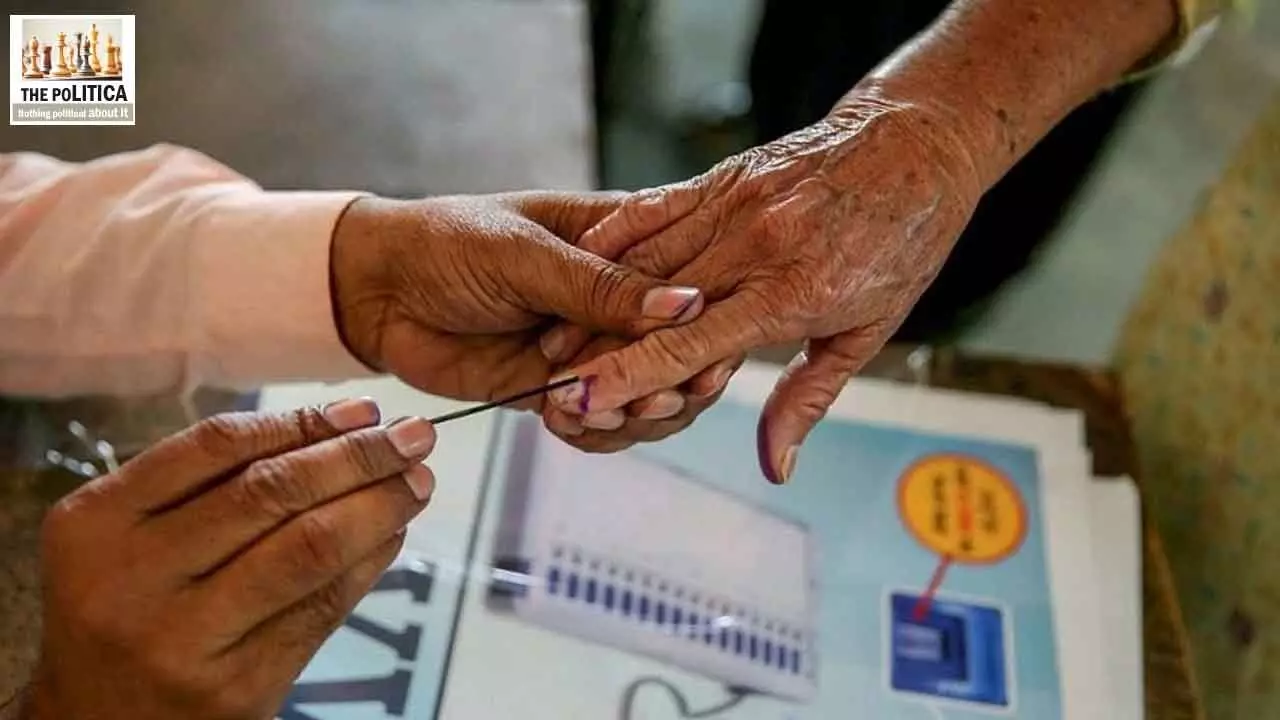J&K elections: A test of leadership and the path forward
The poll outcome will determine whether J&K can maintain its current trajectory of peace, development, and national integration, or whether it will face new challenges and setbacks
J&K elections: A test of leadership and the path forward

The region has faced decades of turmoil, including separatist movements, terrorism, and political instability. The recent changes introduced by the government, such as the abrogation of Article 370 and the delimitation exercise, have significantly altered the political landscape
The baton has been passed on to the people of Jammu & Kashmir. The announcement of elections is the first step towards restoring the right to choose the government and it is now over to the people to elect a dispensation they deem fit to carry them forward. But it is here where the real challenges lay.
J&K needs the right leaders at this defining moment who can bridge several divides, put a lid on separatist tendencies and steer the masses to the nationalistic course.
The question is, are there any leaders to do this? The UT has mostly been ruled by certain dynasties since 1947. The Abdullah and Mufti families have long held sway over the erstwhile state’s politics. And, they have at times been accused of leaning towards the pro-separatists’ agenda. The National Conference has always been advocating for autonomy and pre-1953 status for J& K. In 2000, the state Legislative Assembly, when the National Conference-led government headed by Dr Farooq Abdullah was in place, passed the autonomy resolution, which was rejected by the Centre then.
Former Chief Minister Mehbooba Mufti has also been seen sympathising with the militants and their families. She, however, lost badly in the 2024 Lok Sabha polls. Both these parties have faced allegations of corruption and mismanagement and lack of transparency, accountability and nepotism. Then there are a few other leaders like Sajad Lone’s Peoples Conference (PC), and Apni Party chief Altaf Bukhari. But they have not been able to cut much ice.
Former Congress veteran Ghulam Nabi Azad formed the Democratic Progressive Azad Party (DPAP) with a lot of fanfare but has so far failed to make a mark in UT politics. In the recently concluded Lok Sabha election, its candidates only managed 80,264 votes from three constituencies the party contested. It was Azad’s first electoral foray in the UT after quitting Congress in 2022 and launching his party. In Jammu, the BJP has been doing very well but no leader can sway the whole people from the UT to one side. In the last Assembly election (2014) the divide in results was clear. BJP had won massively in Hindu-dominated Jammu. The People's Democratic Party (PDP) emerged as the largest party with 28 seats, Farooq Abdullah's National Conference won 15 seats, and the Congress had 12. Seven seats went to smaller parties and independents. Since no party secured a majority in the 87-seat Assembly then, the PDP formed the government in alliance with the BJP. The two, however, fell out in 2018.
In 2024, the situation has largely changed as Jammu has gained six Assembly seats and Kashmir has got one more after delimitation. The April-June Lok Sabha elections can provide a peek at how the voters may vote in the Assembly polls. The BJP and the National Conference won two seats each, with the fifth one going to an independent candidate. BJP did not field any candidate in Kashmir and won from Hindu-majority Jammu. What shape the elections will give to the Assembly is eagerly awaited on October 4. In these ten years, since the last Assembly polls were conducted, a lot has changed in J&K. First, its special status under Article 370 was abrogated on August 5, 2019. Second, the state ceased to exist and was converted into two union territories -- J&K, and Ladakh under the Jammu and Kashmir Reorganisation Act, 2019.
Thirdly, a delimitation exercise was carried out in 2022 following which the total number of seats in the Assembly increased to 114, including the 24 seats reserved for Pakistan occupied Kashmir (PoK) and Gilgit Baltistan. Of the remaining 90 seats, 43 are in the Jammu region and 47 in Kashmir.
Along with the size, structure and status change, the UT has also seen several other significant changes. Those who were the flag bearers of the so-called separatist movement are either dead or are incarcerated. The crackdown on the fund flow from sinister sources has ensured drying up, and demonetisation did play a definite part in that. This meant there was no money to fund the stone pelters or jack up the locals to take to guns. The separatist leaders have also been exposed for how they exploited the sentiments to fill their own private coffers.
With the Pakistan-sponsored narrative getting check-mated in the UT, especially in Kashmir, the people have realised the value of living in a terror-free atmosphere.
The Centre has tried to correct the course that had derailed since 1989 when terrorism first struck the valley. The biggest push has been the amalgamation with the rest of the country. Since then, the valley has recorded a change that cannot be ignored. Various businesses are booming, tourist inflow is at its peak and youth is back to education and sports.
At this juncture, the Assembly elections are being held, which means that all the rights that have been done in these years have to be continued. Besides, the security challenges continue as Pakistan keeps sending its trained terrorists to various parts of the UT and some local support exists.
Whosoever becomes the winner, October 4 will decide the future course of the UT, whether it can maintain the peace, build on the nationalistic sentiment, curb the separatist and terror inkling of some motivated elements and drive it on to the road of prosperity or once again lead to the edge of a precipice.

